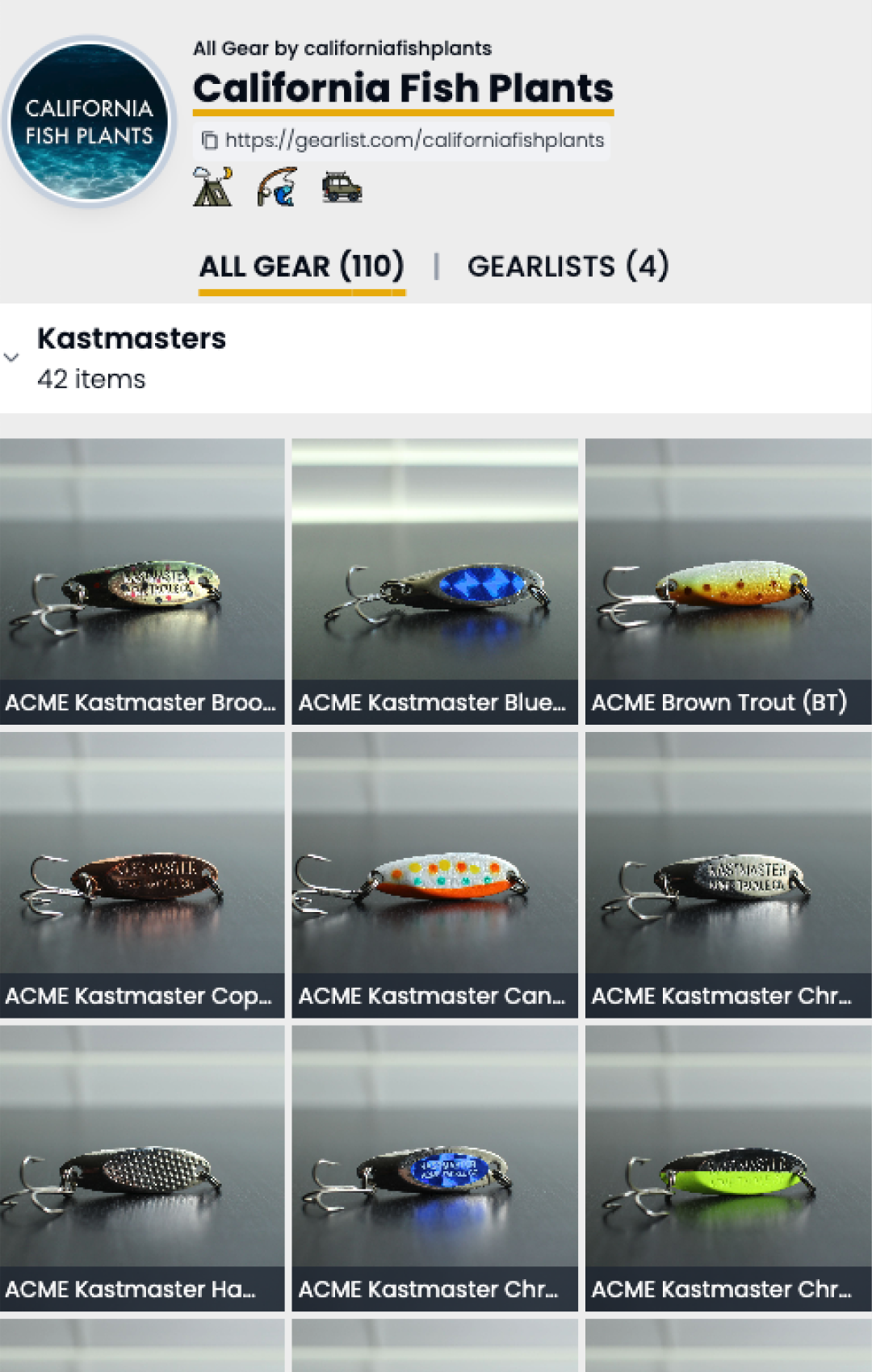Nestled alongside its more prominent sibling, Lake McClure, Lake McSwain stands as a tranquil 2,400-acre reservoir, offering a serene fishing experience in the heart of the San Joaquin Valley. With its smaller size and a prohibition on waterskiing, McSwain caters to those seeking a more peaceful angling escapade, where the cooler waters and abundant trout take center stage.
📈 Latest Fish Plants
Fish here often?
How To Read Fish Plant Graphs
To interpret fish plant graphs effectively, consider the following key elements:
- Blue Vertical Bars and Numbers:
- Representation: The blue vertical bars on the graph represent individual fish plants.
- Weight Measurement: The associated numbers indicate the total weight of the plants in pounds (lbs.) that occurred during a specific week.
- Significance: Monitoring these bars helps identify weeks with higher planting activity, aiding anglers in selecting optimal times for fishing near recent plantings.
- Orange Trend Line:
- Purpose: The orange trend line represents the moving average of all fish plant activities at the specified location.
- Indicator of Activity: A rising trend line suggests a consistent increase in planting activity over the designated period. This indicates the potential for more catch opportunities and signifies a growing fish population over the weeks.
- Interpreting the Moving Average:
- Upward Trend: A rising moving average implies an upward trajectory in planting activity, indicating an increasing number of fish being introduced into the area. This suggests a positive outlook for anglers, as it implies a larger and potentially more accessible fish population.
- Downward Trend (Not Specified): The description does not provide information on the interpretation of a decreasing trend in the moving average. It might be beneficial to include information on what a decreasing trend could signify in terms of fishing prospects.
- No Data Present:
- Possible Explanations: If no data is visible on the graph, it may indicate that the location had no fish plants in the last three months. Alternatively, the absence of data could be due to non-disclosure of fish plants for that location.
- Natural Population: Some fishing areas in California rely on the natural growth of fish populations, and graphs may not show plants if this is the case.
- Graph Disclaimer:
- Data Source: The graphs reflect a combination of publicly disclosed data and estimates. Some locations may disclose fish plants without specifying exact amounts.
- Not Universal: Not all fishing areas have fish plants, and the natural growth of fish populations plays a significant role in many California fishing locations.
Understanding these elements will empower anglers to make informed decisions about when and where to fish based on historical fish plant data.
Note: If no data is present in the graph above, this location may not have had any plants the last 3 months, or may not have publicly disclosed plants. Graphs reflect both publicly disclosed data and estimates, as some locations disclose plants, but not exact amount.
🗺️ Map & Fishing Location
Fish to Expect:
- Rainbow Trout: The stars of McSwain, known for their size and feistiness, thrive in cooler waters near the dam and inlets. Trolling or casting spinners, spoons, or flies in spring and fall promises a tug-of-war.
- Kokanee Salmon: Landlocked salmon beauties gather near the dam, especially in spring and fall. Casting small jigs, flashers, or spoons offers a unique freshwater salmon experience.
- Largemouth Bass: Although not as plentiful as trout, bass lurk in weed beds, rocky shorelines, and around points. Crankbaits, spinnerbaits, and Senkos prove effective for these aggressive fighters.
- Crappie & Bluegill: Schooling near docks, trees, and shallows, these scrappers eagerly take mini jigs and live bait. Patience may reward you with impressive numbers.
Local Insights:
- Brush Pile Bonanza: The submerged brush pile near the fishing dock is a honey hole for trout, especially in the mornings and evenings. Jigs, grubs, or even flies can yield a trophy.
- Shoreline Secrets: Bank fishing near the dam wall and rocky points near the inlet provides excellent access to trout and bass. Lures that mimic shad in spring and fall are particularly effective.
- Troll the Depths: Boat anglers should troll near the dam and along the main channel for suspended trout and kokanee. Keep an eye out for baitfish concentrations – a sure sign of hungry fish.
Unique Things to Note:
- Stable Water Levels: Unlike Lake McClure, McSwain maintains relatively stable water levels, making fish locations more predictable.
- Relaxed Atmosphere: The smaller size and fewer boats compared to McClure create a more relaxed and peaceful fishing experience.
- Wildlife Bonus: Keep an eye out for bald eagles soaring overhead, osprey diving for fish, and deer grazing on the hillsides.
Specific Locations:
- Fishing Dock: Cast from the dock for easy access to trout, crappie, and the occasional bass. The brush pile is a must-try.
- Lower McSwain: This area below the dam offers unique fishing opportunities for trout and bass in the flowing water. Be aware of currents and regulations.
- Inlet Area: Near McClure Point, this area is a haven for kokanee salmon, especially during spawning season in spring and fall. Troll with small jigs or flashers for success.
Lake McSwain is more than just a fishing spot; it’s an escape into tranquility and natural beauty. So grab your rod, breathe in the fresh San Joaquin air, and let the thrill of the catch and the serenity of the lake captivate you. Remember, always follow the local regulations, be mindful of the environment, and fish responsibly. Tight lines!



